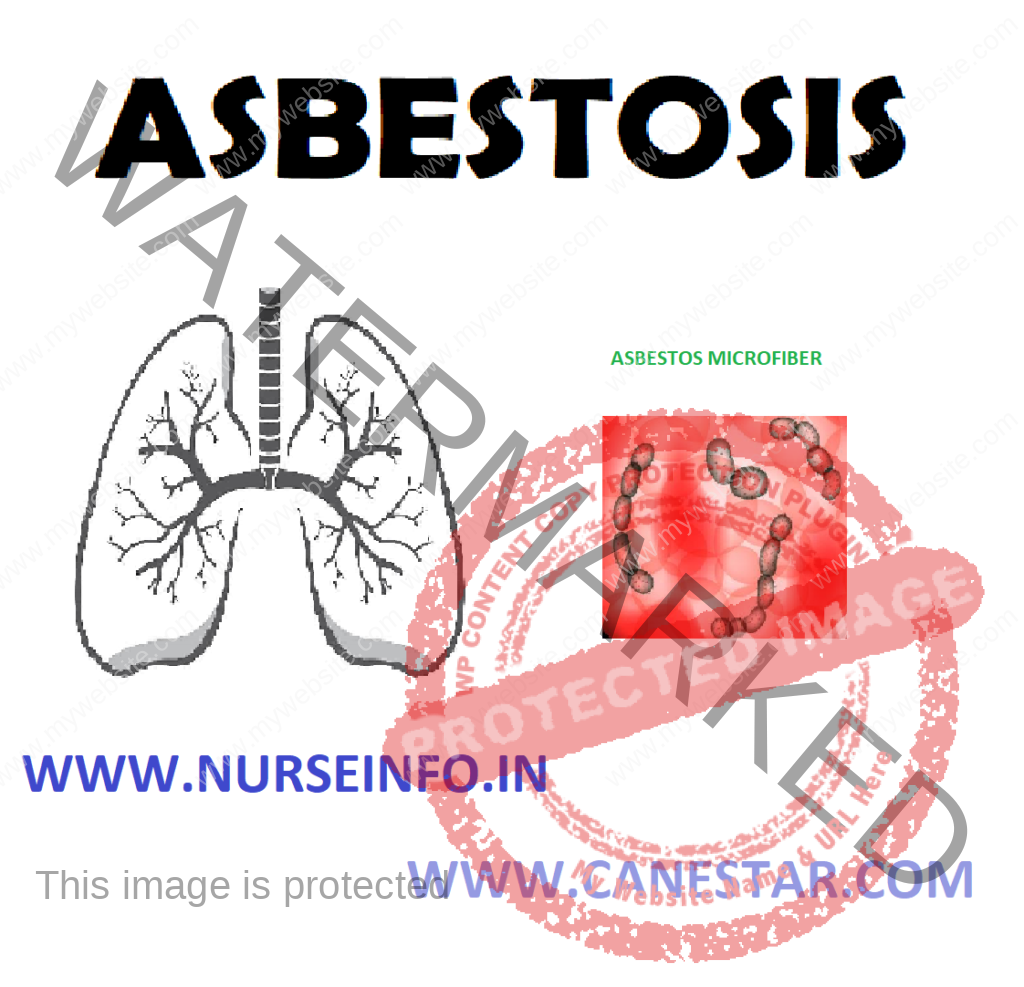ASBESTOSIS – Etiology, Symptoms, Pathophysiology, Diagnosis and Treatment
Asbestosis is a chronic inflammatory and fibrotic medical condition affecting the parenchymal tissue of the lungs caused by the inhalation and retention of asbestos fibers.
ETIOLOGY
Tiny asbestos fibers can get stuck deep inside the lungs. Inhaling asbestos fibers can cause scar tissue to form inside the lungs. This scar tissue does not expand and contract normally, which interferes with breathing. Asbestos fibers may remain in the lungs for a lifetime. In some cases, the fibers might damage the lungs or the membrane covering the lungs, leading to illness and even death
SYMPTOMS OF ASBESTOSIS
- Dry inspiratory crackles: which are clicking or rattling noises made by the lungs during inhalation
- ‘Clubbing of the fingers’: which may include softening of the fingernail beds, and bulging and of the end of the finger
- Misshapen nails: caused by a decrease of oxygenated blood flow to the extremities
- Shortness of breath
- A persistent dry cough
- Loss of appetite with weight loss
- Chest tightness or pain
OTHER SYMPTOMS OF ASBESTOSIS
- Coughing
- Chest pain
- Blood in the sputum
- Swelling in the neck or face
- Difficulty swallowing
- Loss of appetite
- Weight loss
PATHOPHYSIOLOGY
Asbestos is the scarring of lung tissue around terminal bronchioles and alveolar ducts —- resulting from the inhalation of asbestos fibers —- when such fibers reach the alveoli in the lung, where oxygen is transferred into the blood —- activation of the lung’s local immune system —- provoke an inflammatory reaction —- a slow ongoing progression of the immune system —- attempt to eliminate the foreign fibers —- macrophages phagocytose the fibers, releasing cytokines —- which eventually form a fibrous mass —- the result is interstitial fibrosis —- the fibrotic scar tissue causes alveolar walls to thicken —- which reduces elasticity and gas diffusion, reducing oxygen transfer to the blood as well as the removal of carbon dioxide
DIAGNOSIS
- Complete physical examination
- Chest X-ray
- Lung function tests
- A lung biopsy, in which tissue is removed by surgery, is the most reliable way to confirm the presence of microscopic asbestos fibers because X-rays cannot detect asbestos fibers in the lungs
TREATMENT
- Oxygen therapy to relieve shortness of breath
- Respiratory physiotherapy to remove secretions from the lungs
- Medications to thin secretions and relieve pain


